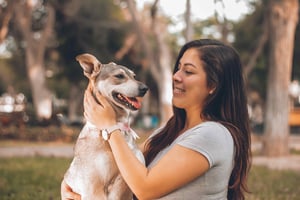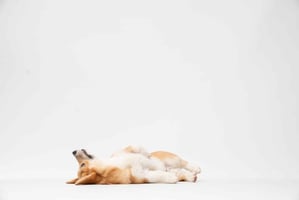Are you looking for ways to house train your older dog? Are you worried that it might be too late...
House Training an Older Dog without a Crate
Crate-free house training is a popular option for older dogs. It is important to understand the basics of house training, including the best methods and tips to ensure success. This article will provide an overview of house training an older dog without a crate, giving you all the information you need to get started.
What is House Training?
House training is the process of teaching a dog to eliminate in the appropriate areas of the home. This process involves teaching the dog where to go and when to go, as well as preventing them from going in the wrong places. House training is an important part of owning a dog, as it helps keep your home clean and free from messes and odors.
It is important to start house training as soon as possible, as puppies and older dogs alike can learn quickly and easily with the right techniques.
House Training an Older Dog without a Crate
House training an older dog without a crate is possible, but it may take more time and patience than with a younger pup. The key to successful house training is consistency and understanding of the dog’s needs. Here are some tips for house training an older dog without a crate:
- Establish a routine: Establish a regular routine for your dog and stick to it. Make sure to take them out at the same time every day, and reward them for eliminating in the appropriate areas. This will help them learn where they should go and when.
- Provide plenty of opportunities: Make sure to give your dog plenty of opportunities to go outside. Take them out after meals, after playtime, and at least once every few hours. This will help them learn where they should go and when.
- Redirect accidents: If your dog has an accident, redirect them to the appropriate area and reward them for going there. This will help them learn where they should go and will help prevent future accidents.
- Be patient: House training takes time and patience. Be patient with your dog and don’t expect them to learn overnight. With consistent reinforcement and positive reinforcement, your dog will learn quickly.
Tips for Successful House Training
Here are some tips for successful house training:
- Keep it positive: House training should be a positive experience for your dog. Use positive reinforcement and reward your dog for going in the right areas. This will help them learn quickly and make the process more enjoyable.
- Be consistent: Consistency is key when house training. Make sure to take your dog out at the same times every day and reward them for going in the right areas. This will help them learn quickly and make the process easier.
- Watch for signs: Pay attention to your dog’s body language and look for signs that they need to go. This will help you take them out before they have an accident and will help them learn quickly.
- Clean up accidents: Clean up any accidents quickly and thoroughly. This will help prevent future accidents and will help your dog learn where they should go.
Conclusion
House training an older dog without a crate is possible, but it may take more time and patience than with a younger pup. It is important to establish a routine, provide plenty of opportunities, redirect accidents, and be patient with your dog. With consistent reinforcement and positive reinforcement, your dog will learn quickly and house training will become a more enjoyable experience for both you and your dog.



